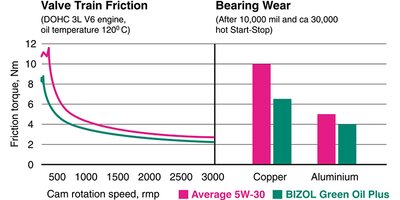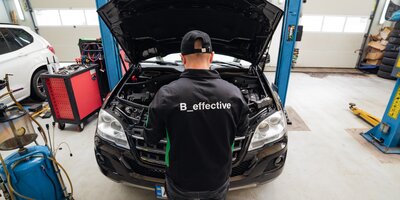MAINTAINING ELECTRICS – A NEGLECTED TASK
Keeping electrical woes at bay
Regular maintenance involves more than just periodically checking the coolant level and replacing a split wiper blade. Keeping a vehicle in a roadworthy condition means keeping an eye on everything that can deteriorate and acting in good time to prevent breakdowns and failures.
The vehicle’s electrical system is no exception to this, as a lot of breakdowns occur due to electrical failures. Timely intervention and a spot of maintenance can go a long way to prolonging the service life of components and ensuring everything is kept in good working order.
Some jobs are the ‘poor cousins’ when it comes to vehicle maintenance and simply don’t get as much attention as others. The maintenance of vehicle electrics is a job that falls under the radar more often than not. A handful of tools is all you need to keep the electrical components functioning as they should, which is necessary as, over time, connections get dirty and contacts no longer conduct as they should.
Is it really necessary to check and clean the car’s electrical components?
The risk of a breakdown or a system malfunctioning can be reduced significantly by cleaning electrical components regularly to ensure the vehicle systems continue to perform as intended. The battery terminals are particularly important because the power needs to get to and from the battery.
A critical part of the circuit are the earth straps connected to the vehicle body. Earth straps must be kept clean to maintain good contact to the vehicle body, otherwise spurious signals can be created causing the (MIL) check engine light or driver assistance system lights, such as ABS warning, to illuminate.
Funnily enough, you can often tell when a car’s earth contacts are no longer functioning properly, as you will have almost certainly seen the phenomenon from time to time.
If the earth connection on a car’s rear lights is poor you often see, for example, the sidelights come on dimly when the driver presses the brake, instead of the brake lights. The rear light cluster is not earthed sufficiently and the electricity flows through the rear light cluster finding the path of lowest resistance to earth, which is often through another bulb e.g., the indicator or sidelight light bulbs.
How can you tell when electrical contacts need cleaning?
Dirt and corrosion can cause electrical faults and electrical faults are notoriously difficult to trace. Often it is easy to take the symptoms at face value and go straight to a component when it is really an electrical contact that is the source of the trouble. Here are a few tell-tale signs which indicate that the electrics might need checking and cleaning:
- A warning light on the dashboard
Electrical faults, especially earth connections, often cause warning lights to appear on the dashboard, due to signal interference, even if the actual component is fine. First check and clean the contacts, only if the fault does not go away should you check an individual component for any obvious faults. Often simple faults like dirty pins or deposits on the earth strap are the reason for the disco on the dashboard, not component failure.

For instance, the use of copper grease on the brakes can affect the ABS sensor signal and bring on the warning light for the same reason that dirt ingress in a multiplug or a sensor failure will i.e., interruption of the signal. This is why modern brakes need a ceramic lubricant.
- An intermittent dip in performance
The alternator might not be charging the battery properly, which could be the result of dirty battery terminals, a defective battery or a worn-out alternator. By keeping the battery connections clean at all times, you automatically reduce the chances of engine problems due to avoidable electrical faults.
- Headlights dim
If the headlights do not light up the road as they should, there could be a connection problem. Maybe the headlights dim slightly when you switch on the heated rear window etc? If the headlights dim temporarily that’s okay, but if the headlights don’t recover fully this could indicate a connection problem, such as dirty pins in the multi-plug or a bad earth connection.
- Electric windows not operating as usual
Slow window wind down etc., can be caused by dirty or corroded connections. Check connections at this point to find the source of the problem before a loss of function occurs.
How to clean the electrics with contact cleaner
Do you feel uneasy at the prospect of cleaning electrical parts? Well, there really is no need to worry, however, you should exercise caution. Access is the first hurdle, as a lot of wiring and connectors are hidden behind covers and often located in difficult to reach areas. However, most parts are normally easy enough to locate and access if you check the manual first.
One risk you can easily avoid is using the wrong cleaning method. A lot of people reach for a screwdriver, abrasives or some form of metal tool to clean off dirt and corrosion. The trouble with this method is that it also damages the surface of the connector, which is counterproductive and can do more harm than good, often leading to increased corrosion or lower conductivity.
Try to resist the temptation to reach for a screwdriver or the like and instead grab a can of contact cleaner. The condition of the contacts will be better afterwards and you won’t need to clean them again so soon either, because contact cleaner causes no mechanical damage and, after spraying, the contacts are coated with a corrosion inhibiting film.
Contact Clean+ c32 is made specifically for the job and is safe for electrical contacts. The spray is formulated to clean away grease, oil and dirt, and re-establish conductivity rapidly. It has a powerful cleaning action, getting to work instantly, removing stubborn dirt and corrosion and leaving behind a clean contact but no residue.

You might also like

Prof. Dr. Boris Zhmud, Head of R&D, BIZOL Germany

Within the realm of automotive care, few substances are as vital as motor oil, in ensuring the seamless operation of a vehicle's propelling device. It serves as the lifeblood of a motor, ensuring that the intricate machinery operates efficiently and without unnecessary friction. The functions of motor lubricant substance extend far beyond just lubrication, encompassing a range of critical tasks that contribute to the longevity and performance of a propelling mechanism. In this article, we’ll delve into the multifaceted functions of motor oil and explore how it plays a pivotal role in maintaining the health of automotive powerhouses.

The modern marvel of an internal combustion motor powers our vehicles, providing the strength and reliability we rely on for daily transportation. However, just like anything else subjected to constant use, motorized units experience wear and tear over time. Component deterioration can significantly impact performance and longevity. In this article, we will delve into the intricacies of engine wear meaning, explore the various causes behind it, provide actionable tips to reduce and prevent it. Furthermore, we will look at how specialized engine oils, such as BIZOL, play a crucial role in safeguarding your engine’s health. Let’s begin by understanding what engine wear is and the factors that contribute to it.

